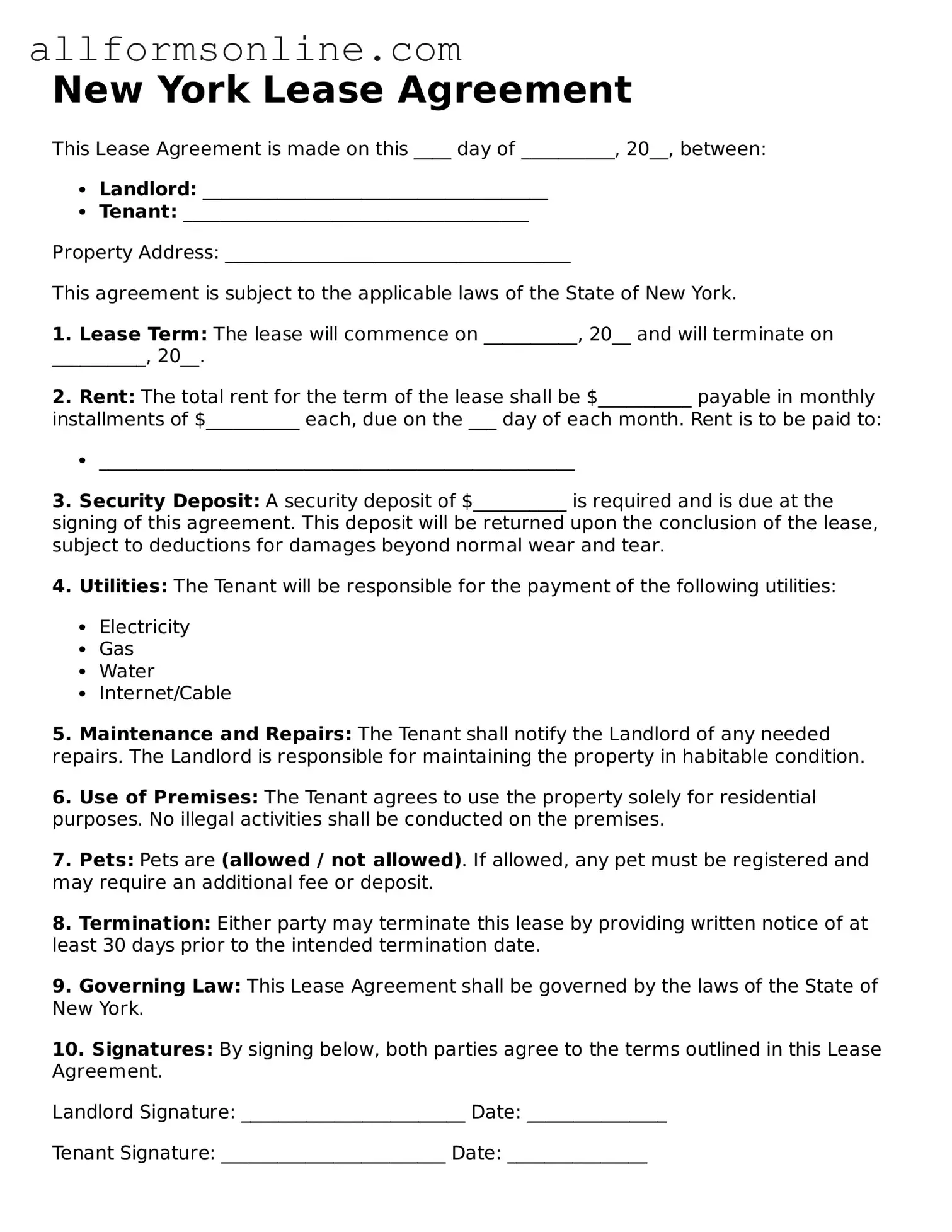What is a New York Lease Agreement?
A New York Lease Agreement is a legal document that outlines the terms and conditions under which a landlord rents property to a tenant in New York. It details the rights and responsibilities of both parties, including rent amount, duration of the lease, and rules regarding the property.
What should be included in a New York Lease Agreement?
Essential elements include the names of the landlord and tenant, property address, lease term, rent amount, payment due dates, security deposit information, maintenance responsibilities, and rules regarding pets or alterations to the property. Additional clauses can also be added as needed.
How long is a typical lease term in New York?
Lease terms in New York can vary. Commonly, leases are for one year, but they can also be month-to-month or for shorter or longer periods, depending on the agreement between the landlord and tenant.
Can a lease be terminated early in New York?
Yes, a lease can be terminated early if both parties agree to it. Additionally, specific circumstances such as a tenant's military service or a landlord's failure to maintain the property may allow for early termination. Always check the lease terms for any specific provisions related to early termination.
What is a security deposit, and how is it handled?
A security deposit is a sum of money paid by the tenant to the landlord to cover potential damages or unpaid rent. In New York, landlords can charge up to one month's rent as a security deposit. The landlord must return the deposit within 14 days after the tenant moves out, minus any deductions for damages or unpaid rent.
Are there any specific laws that govern lease agreements in New York?
Yes, New York has specific laws that govern lease agreements, including rent control and tenant protection laws. These laws dictate how much rent can be charged, the process for eviction, and the rights of tenants regarding repairs and maintenance. It is essential to be familiar with these regulations.
What happens if a tenant fails to pay rent?
If a tenant fails to pay rent, the landlord can initiate an eviction process. This typically involves providing a notice to the tenant and may lead to a court proceeding. It is crucial for landlords to follow the legal process to avoid complications.
Can a landlord enter the rental property without permission?
Generally, a landlord must provide notice before entering the rental property, except in emergencies. The lease agreement may specify the notice period required. It is important for both parties to understand these rights to avoid conflicts.
What should I do if I have a dispute with my landlord or tenant?
If a dispute arises, the first step is to communicate directly with the other party to resolve the issue. If that does not work, mediation or legal action may be necessary. Keeping detailed records of all communications and agreements can be helpful in resolving disputes.
